Summary: Did you miss out on the annual BRAIN Initiative Investigators meeting last month? Catch up here!
At the 5thAnnual BRAIN Investigators meeting, held in Washington, D.C., both pollen and success were in the air. In the Advisory Committee to the NIH Director BRAIN Initiative Working Group 2.0 Town Hall on April 11, NIH Director Dr. Francis Collins reported that he had just returned from being “grilled” at the appropriations hearing for NIH.
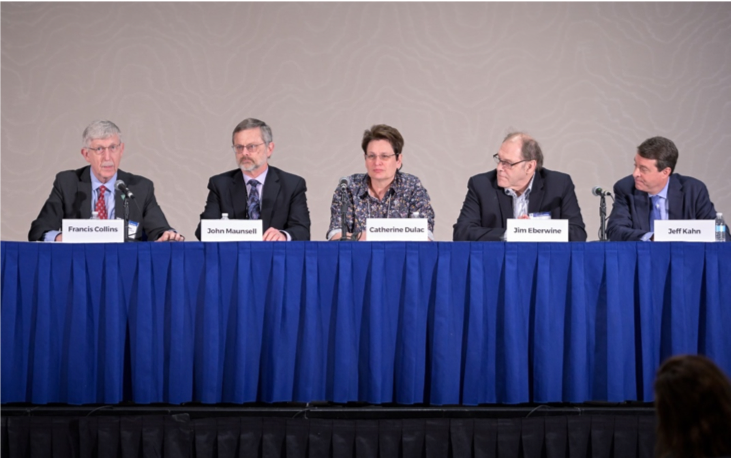
They know about [BRAIN], they are interested in [BRAIN], they want to know how [the BRAIN Initiative] is going.” He said, “I was able to tell them that, in this very town, at this very time, some of the best and brightest minds are gathered to work out answers to that question.
From April 11-13, almost 1600 BRAIN Initiative awardees, representatives, and investigators joined federal workers from NIH, NSF, DARPA, IARPA, and FDA, members of congress, members of the media, and the interested public to advance our understanding of the brain and nervous system.
I can tell [the senate subcommittee] confidently that the projects that we have already funded have outstripped the expectations of most of us back four years ago when [this project] got underway” he said, speaking of the BRAIN Initiative, and expressed both pride and hope in the next phase of the initiative, which he implied should lean toward the ethics of neuroscience.
There are some very important and sensitive issues here that need to be included in our conversations, not sort of after the fact, but all the way along,” he said “We are beginning to see some of these applications that are pretty breathtaking and do have ethical considerations.
Plenary Sessions
Each keynote address focused on these breathtaking applications of research and ethical considerations, as well as the bright future of BRAIN Initiative-funded research.
The April 11th talk discussed brain organoids and how Dr. Paola Arlotta’s team made them into more useful models for brain development. “The process of generation of the cell types of the cortex, and perhaps of other regions of the nervous system, is highly constrained,” she said, summarizing her team’s findings.
BRAIN’s focus on ethics was especially highlighted in the April 12th discussion of self-control. This important trait is associated with successful, non-criminal lives, but it also varies naturally from person-to-person and is based on the structure of the brain. Because of this, Dr. Patricia Churchland asked whether prison sentences and jail time are really the best way to handle the issue? We may not have the answer yet, but the question of ethics should be kept in mind as we continue advancing the field of brain research. Other plenary talks covered the subject of how the brain determines it’s relative location in an environment (“Space and Time: Network Dynamics of the Entorhinal Cortex”, presented by Dr. Edward Moser) and how we can measure the brain if it is acting as both a “circuit-like” system and a “hydraulic-like” system (“Dimensionless Numbers in Brain Science” presented by Dr. Marcus Meister).
Scientific Symposia
Thirty-six different BRAIN-funded projects were selected to be presented as Research Highlight Talks, falling into three distinct categories:
Cells and Circuits
This track described technologies and approaches for identifying, mapping, and accessing specific cells and circuits in the brain. In particular, novel technology can map important protein interactions in single cells to identify and classify new type of cells in the brain, and another method marks cells and organelles with nanoparticles designed to detect and report on proteins and other cell structures.
Recording, Modulation, and Imaging Technologies
This track discussed new imaging methods and ways of revealing the structures of the brain, including using ultrasound to both measure and stimulate neurons in macaque brains. New prosthetics such as the Orion implant were also mentioned.
Understanding the Brain
This track discussed mathematical principles behind the “systems of dependence” between neurons that creates the complex connections of the brain. It also covered new insights into developmental steps, perception, and the processing of that perception in the brain.
For the first time this year, attendee-organized symposia highlighted emerging areas of focus in BRAIN, including: Bridging Animal and Human Brain Research with fMRI, Emerging Technologies in Studying Spinal Cord Circuitry and Dynamics, and Neuropharmacology at the Age of the BRAIN Cell-Census. Additionally, focused sessions provided forum opportunities for those interested in specialized topics, such as the BRAIN Initiative Informatics Infrastructure and Frontiers of Non-Invasive Brain Imaging. Specialty sessions incorporated topics like training and neuroethics to help guide current and potential BRAIN investigators in planning, executing, and enhancing their projects.
Poster Sessions
Hundreds of poster presentations by BRAIN-funded investigators were spread across the three-day conference and ranged in topic from new techniques for imaging and visualization to assessments of deep brain stimulation, and brain-to-technology interfaces.
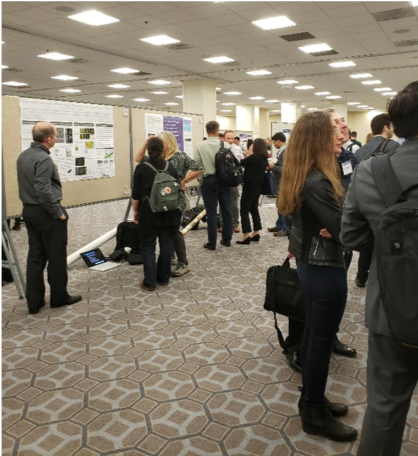
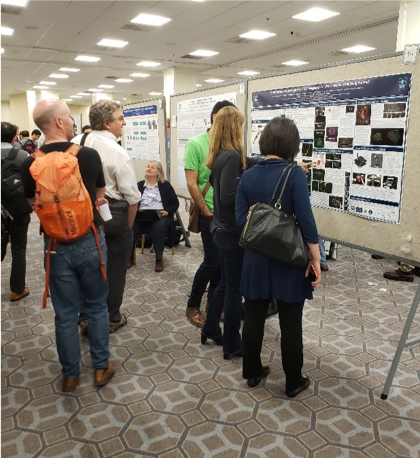
These posters, and the many others on display, inspired vibrant discussion throughout the poster hall. These discussions make excellent jumping off points for collaborations and new avenues of research. They are one of the most valuable aspects of the annual BRAIN conference, according to attendees.
Show Us Your BRAINS!
Upstairs from the poster hall, BRAIN investigators had a valuable opportunity to show their creativity through beautiful works of art in the first ever “Show Us Your BRAINS!” contest. All of the photos and videos displayed the stunning and intricate beauty of the brain, but two of them were voted as the best of the batch.
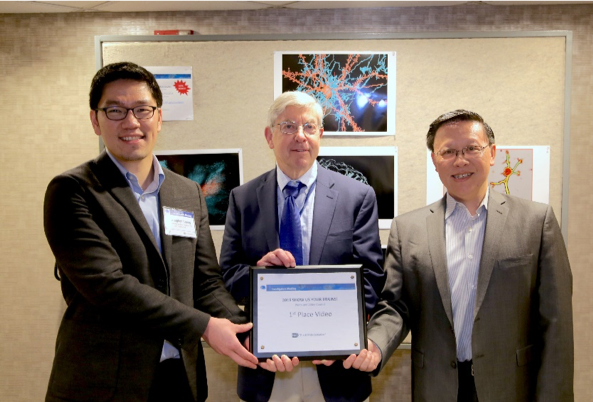
The first place video winner was “High -Resolution MORF3-labeled Hippocampal Neurons” by X. William Yang from UCLA (MD, PhD) and Kwanghun Chung from MIT (PhD) and was made by preserving pyramidal neurons in a mouse brain with their new method, known as SHIELD.
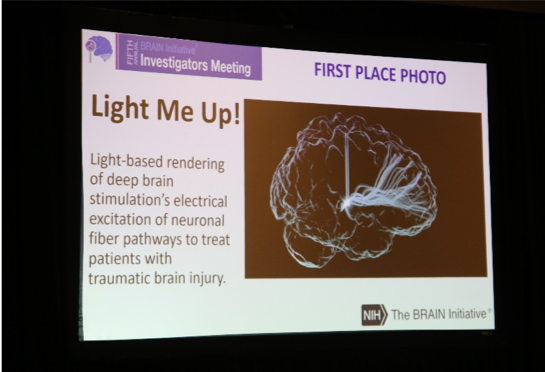
The first place photo winner was “Light Me Up!” by Andrew Janson, a graduate student research assistant at the Scientific Computing and Imaging Institute at the University of Utah. This photo showed off the excitation of neurons caused by deep brain stimulation as branching, lit-up fibers that stretched far into the brain.
All of the winning photos were a part of BRAIN Initiative research, and appeared in talks throughout the conference, adding additional depth to the art.
Communicating with the Public
With all of this new and interesting research coming out of the BRAIN Initiative, how can scientists and researchers communicate their research to reporters and the public?
For the first time, the BRAIN Initiative Investigators meeting offered guidance in the form of a three-part communications program. “How to Talk to the Public about BRAIN Science” by NPR’s John Hamilton explained the journalist’s side of things, while “How to Talk to the Media about BRAIN Science” by Emmy-award winning journalist, Betsy Stark, and “How to Use Social Media to Promote BRAIN Science” by Ogilvy Public Relations Vice President, Rohan Verma, sought to help build scientists’ skills in communicating their research to the media and general public.
Are you looking to join the conversation? Want to practice your communication skills? Keep an eye out for the 6th Annual BRAIN Initiative Investigators Meeting in 2020! #studyBRAIN

